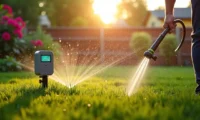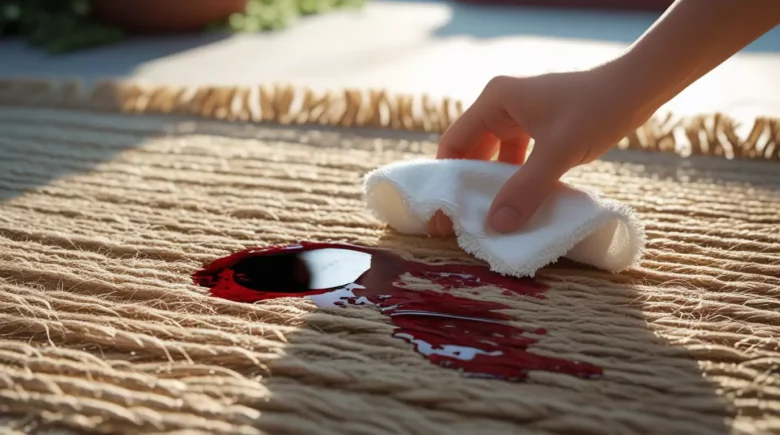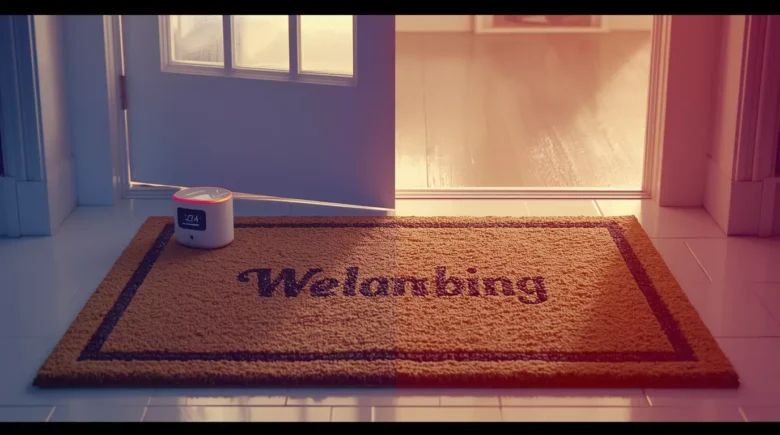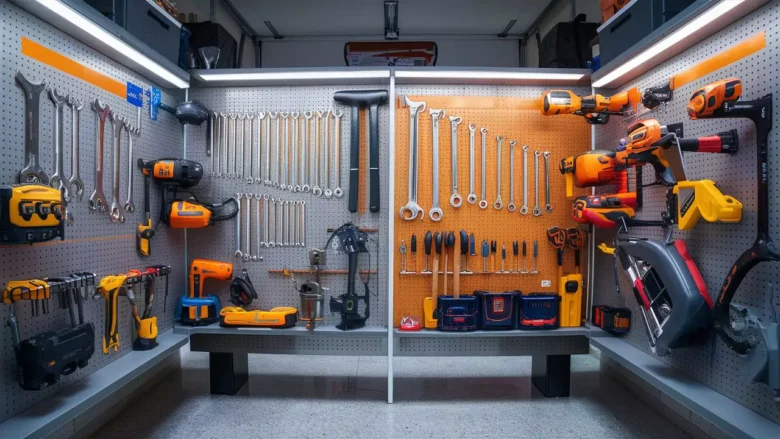Electric weed killer vs manual weed pulling – this debate keeps every homeowner up at night.
- The Real Problem Nobody Talks About
- Manual Weed Pulling: The Old School Champion
- What Manual Weeding Actually Is
- The Brutal Truth About Hand Weeding
- My Manual Weeding Horror Story
- 💖 You Might Also Like
- Electric Weed Killer: The Modern Solution
- How Electric Weed Killers Work
- The Electric Advantage
- When Electric Weed Killers Shine
- Electric Weed Killer vs Manual Weed Pulling: Head-to-Head Comparison
- Speed and Efficiency
- Effectiveness on Root Systems
- Physical Demand
- Cost Analysis
- The Smart Strategy: When to Use Each Method
- Use Manual Weed Pulling When:
- Use Electric Weed Killers When:
- ✨ More Stories for You
- The Hybrid Approach That Actually Works
- Safety Considerations for Both Methods
- Manual Pulling Safety
- Electric Weed Killer Safety
- Environmental Impact: The Full Picture
- Manual Weed Pulling Environmental Profile
- Electric Weed Killer Environmental Profile
- 🌟 Don't Miss These Posts
- Cost-Benefit Analysis: Real Numbers
- Manual Pulling (5-Year Cost):
- Electric Weed Killer (5-Year Cost):
- Frequently Asked Questions
- Can electric weed killers damage my lawn grass?
- How deep do I need to pull weeds to prevent regrowth?
- Are battery-powered electric weed killers worth it?
- What’s the best time of year for manual weed pulling?
- Can I use electric weed killers on gravel driveways?
- How many times do I need to treat weeds with electric killers?
- Is manual weeding better for organic gardens?
- My Final Recommendation
Trust me, I’ve been there.
Standing in my driveway at 7 AM on a Saturday morning.
Staring at dandelions that somehow multiplied overnight like they’re running some kind of underground empire.
You’re probably wondering the same thing I was:
Should I grab my trusty weeding tool and go full caveman on these weeds?
Or should I invest in one of those fancy electric weed killers that promise to zap weeds into oblivion?
Let me save you the headache.
I’ve tried both methods.
Made mistakes with both.
And I’m about to break down exactly what works, what doesn’t, and what’s worth your time and money.
The Real Problem Nobody Talks About
Here’s what gardening “experts” won’t tell you.
Weed control isn’t a one-time fix.
It’s an ongoing battle.
And the method you choose determines whether you’re fighting smart or fighting hard.
Most people think it’s about killing weeds.
Wrong.
It’s about preventing them from coming back.
That’s where the electric weed killer vs manual weed pulling debate gets interesting.
Manual Weed Pulling: The Old School Champion
What Manual Weeding Actually Is
Manual weed pulling is exactly what it sounds like.
You grab the weed.
You pull it out.
Root and all.
No chemicals.
No electricity.
Just you, your hands, and maybe a weeding tool if you’re fancy.
The Brutal Truth About Hand Weeding
The Good:
- Gets the entire root system – When done right, you remove the whole plant
- Zero environmental impact – No chemicals, no electricity, no harm to beneficial insects
- Free workout – Burns calories while you work
- Immediate results – Weed gone, problem solved
- Works on any weed type – From tiny seedlings to massive dandelions
The Bad:
- Time-intensive – Large areas can take hours
- Physical strain – Your back, knees, and hands will feel it
- Weather dependent – Best done when soil is moist
- Requires perfect technique – Leave root fragments and weeds return stronger
My Manual Weeding Horror Story
Last spring, I decided to tackle my entire front yard by hand.
3,000 square feet of pure weed paradise.
Took me 12 hours spread across three weekends.
By hour 8, I was questioning my life choices.
My wife found me lying face-down in the grass, muttering about dandelion revenge.
But here’s the kicker – it actually worked.
Six months later, that area had 70% fewer weeds than the previous year.
Manual weeding works when you do it right.
💖 You Might Also Like
Electric Weed Killer: The Modern Solution
How Electric Weed Killers Work
Electric weed killers use heated coils or steam to literally cook weeds to death.
You plug it in (or use a battery-powered model).
Point it at the weed.
Hold for a few seconds.
The heat destroys the plant’s cellular structure.
Weed dies within 24-48 hours.
The Electric Advantage
The Good:
- Speed demon – Covers large areas quickly
- Easy on your body – No bending, pulling, or strain
- All-weather friendly – Works in dry conditions when manual pulling fails
- Precision targeting – Hit weeds without disturbing surrounding plants
- No chemicals – Safe around kids, pets, and beneficial insects
The Bad:
- Surface-level killing – Doesn’t always kill deep root systems
- Power dependency – Need electricity or charged batteries
- Initial investment – Quality units cost $50-200+
- Heat safety concerns – Can damage desirable plants if you’re not careful
When Electric Weed Killers Shine
I bought my first electric weed killer two years ago.
Game changer for gravel driveways and patio cracks.
Those tiny weeds that are impossible to grab by hand?
Zapped in seconds.
The larger weeds with deep taproots?
That’s where things got tricky.
Electric Weed Killer vs Manual Weed Pulling: Head-to-Head Comparison
Speed and Efficiency
Manual Pulling:
- Small area (under 100 sq ft): 30-60 minutes
- Medium area (100-500 sq ft): 2-4 hours
- Large area (500+ sq ft): 4+ hours
Electric Weed Killer:
- Small area (under 100 sq ft): 10-15 minutes
- Medium area (100-500 sq ft): 30-60 minutes
- Large area (500+ sq ft): 1-2 hours
Winner: Electric weed killer – No contest on speed.
Effectiveness on Root Systems
Manual Pulling:
- Removes 95%+ of root system when done properly
- Single treatment often eliminates weed permanently
- Works on all weed types and sizes
Electric Weed Killer:
- Kills 80-90% of shallow-rooted weeds permanently
- Deep-rooted weeds (dandelions, thistles) often require multiple treatments
- Most effective on young, tender weeds
Winner: Manual pulling – Better long-term weed control.
Physical Demand
Manual Pulling:
- High physical strain on back, knees, hands
- Requires good mobility and strength
- Can cause repetitive stress injuries
Electric Weed Killer:
- Minimal physical demand
- Suitable for people with mobility issues
- Some models can be heavy during extended use
Winner: Electric weed killer – Much easier on your body.
Cost Analysis
Manual Pulling:
- Initial cost: $10-30 for basic tools
- Ongoing cost: $0 (except your time and energy)
- Tools last for years with proper care
Electric Weed Killer:
- Initial cost: $50-200+ for quality units
- Ongoing cost: Electricity (minimal) or replacement batteries
- May need replacement after 3-5 years
Winner: Manual pulling – Lower total cost over time.
The Smart Strategy: When to Use Each Method
Use Manual Weed Pulling When:
You have deep-rooted perennial weeds
- Dandelions
- Plantain
- Dock
- Thistles
The area is small and manageable
- Garden beds
- Around trees and shrubs
- Small lawn sections
Soil conditions are perfect
- Recently watered or after rain
- Soil is soft and workable
You want permanent results
- Willing to invest time for long-term control
- Don’t want to repeat treatments
Use Electric Weed Killers When:
You’re dealing with shallow-rooted annuals
- Crabgrass
- Chickweed
- Young broadleaf weeds
You have large areas to cover
- Driveways
- Walkways
- Patio areas
Soil is too hard for pulling
- Dry, compacted earth
- Rocky or gravelly areas
Physical limitations are a factor
- Back problems
- Mobility issues
- Limited time availability
✨ More Stories for You
The Hybrid Approach That Actually Works
Here’s what I do now.
And it’s changed everything.
Spring offensive (Manual pulling):
- Target large, established weeds first
- Pull when soil is moist from spring rains
- Focus on perennials that will cause problems all season
Summer maintenance (Electric killer):
- Zap new seedlings before they establish
- Quick treatments on walkways and hard surfaces
- Touch-ups on areas missed during spring pulling
Fall cleanup (Combination):
- Manual pull any survivors that got established
- Electric zap late-season annuals going to seed
- Prep for next year’s easier maintenance
This approach cut my total weeding time by 60%.
And my weed population by 80%.
Safety Considerations for Both Methods
Manual Pulling Safety
Protect your back:
- Use proper lifting techniques
- Take frequent breaks
- Consider kneeling pads or garden stools
Watch for hazards:
- Poison ivy and oak
- Thorny plants (roses, blackberry)
- Insect nests
Tool maintenance:
- Keep tools clean and sharp
- Disinfect between different garden areas
- Replace worn handles to prevent blisters
Electric Weed Killer Safety
Heat awareness:
- Never touch heated elements
- Allow cooling time between uses
- Keep children and pets away during operation
Electrical safety:
- Check cords for damage before each use
- Keep electrical connections dry
- Use GFCI outlets for outdoor use
Target accuracy:
- Avoid desirable plants nearby
- Be careful around plastic irrigation lines
- Don’t use near mulch that could ignite
Environmental Impact: The Full Picture
Manual Weed Pulling Environmental Profile
Positives:
- Zero carbon footprint
- No chemical runoff
- Preserves beneficial soil organisms
- Doesn’t harm pollinators or other beneficial insects
Considerations:
- Soil disturbance can promote erosion
- Disturbing root systems may damage nearby plants
- Frequent cultivation can disrupt soil structure
Electric Weed Killer Environmental Profile
Positives:
- No pesticide residues
- Minimal soil disturbance
- Precise application reduces collateral damage
- No groundwater contamination risk
Considerations:
- Electricity consumption (usually minimal)
- Manufacturing impact of electrical devices
- Heat can temporarily sterilize beneficial soil microbes
Bottom line: Both methods are environmentally friendly compared to chemical herbicides.
🌟 Don't Miss These Posts
Cost-Benefit Analysis: Real Numbers
Let me break down the actual costs over 5 years:
Manual Pulling (5-Year Cost):
Initial investment:
- Quality weeding tools: $25
- Knee pads: $15
- Garden gloves: $10
- Total: $50
Annual costs:
- Replacement gloves: $5/year
- Tool maintenance: $2/year
- Total per year: $7
5-year total: $85
Electric Weed Killer (5-Year Cost):
Initial investment:
- Quality electric weed killer: $120
- Extension cord (if needed): $20
- Total: $140
Annual costs:
- Electricity: $3/year
- Potential battery replacement: $15/year (if battery-powered)
- Total per year: $18
5-year total: $230
The math is clear: Manual pulling costs 63% less over time.
But remember – time is money too.
If electric killing saves you 50+ hours over 5 years, the efficiency might justify the extra cost.
Frequently Asked Questions
Can electric weed killers damage my lawn grass?
Yes, if you’re not careful. The heat doesn’t discriminate between weeds and grass. Use precision and keep the applicator moving to avoid burning grass roots.
How deep do I need to pull weeds to prevent regrowth?
For most weeds, you need to remove at least 2-3 inches of the root system. Dandelions and similar tap-rooted weeds need the entire root removed – sometimes 6+ inches deep.
Are battery-powered electric weed killers worth it?
For small areas, yes. They offer mobility without dragging cords. But corded models are more powerful and don’t run out of juice mid-job.
What’s the best time of year for manual weed pulling?
Early spring (March-May) when soil is moist but weeds haven’t fully established. Second best is early fall when weeds are weakened but soil is still workable.
Can I use electric weed killers on gravel driveways?
Absolutely. This is where electric weed killers excel. The gravel won’t be damaged by heat, and you can target weeds growing through cracks easily.
How many times do I need to treat weeds with electric killers?
Annual weeds usually die with one treatment. Perennial weeds with deep roots typically need 2-3 treatments spaced 10-14 days apart.
Is manual weeding better for organic gardens?
Both methods are organic-friendly since neither uses chemicals. Manual pulling might be slightly better since it doesn’t use any energy and removes the entire plant.
My Final Recommendation
After three years of testing both methods extensively, here’s my honest take:
Start with manual pulling for your first season.
Learn your weeds.
Understand your soil.
Get familiar with your garden’s trouble spots.
Then add an electric weed killer as your speed tool.
Use the 80/20 rule:
- 80% of your weed control comes from good manual pulling technique
- 20% comes from strategic electric treatments for maintenance
The electric weed killer vs manual weed pulling debate isn’t really a competition.
They’re different tools for different jobs.
Master both, and you’ll have the cleanest, most manageable garden on your block.
Without breaking your back.
Or your bank account.
Electric weed killer vs manual weed pulling – now you know exactly when and how to use each method for maximum results.



























